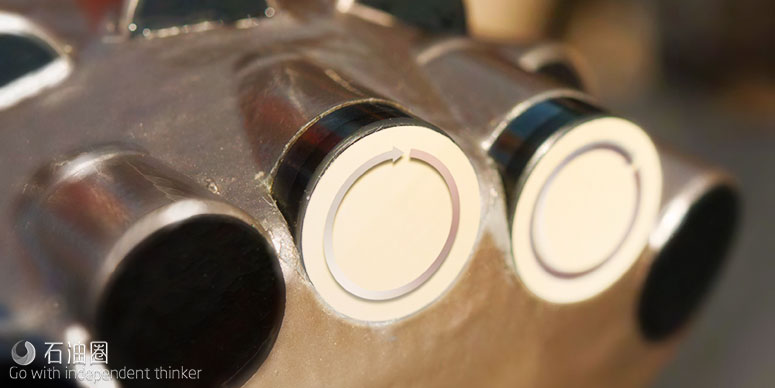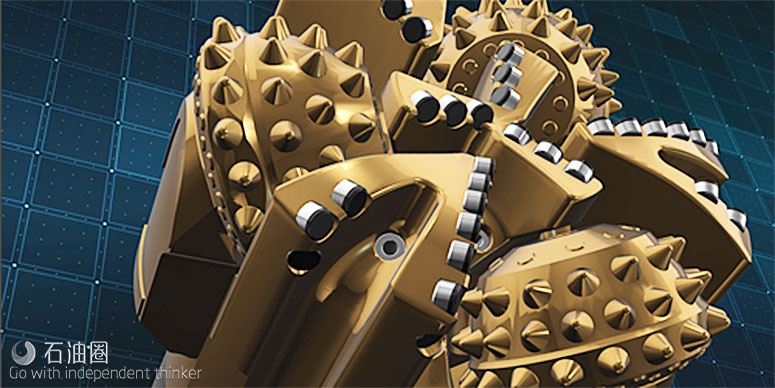Although a drill bit is but one component of a large and complex drilling system, it can have an outsized impact on the efficiency of a drilling operation. “While the amount of money spent on drill bits may be less than 1% of the total cost of the well, it can really be argued that no single component contributes more to the overall drilling performance,” said Wiley Long, Bits and Drilling Tools Product Champion at Smith Bits, a Schlumberger company.
In response to these needs from operators, service and tool companies have used advanced modeling and finite element analyses to understand the major barriers to ROP and durability, including poor cuttings evacuation, high thermal generation and vibrations. Based on these understandings, they’ve developed new cutter geometries and layouts and improved the hydraulics of the bit.
In the past, increasing ROP often would decrease durability. But in today’s drill bits, higher bit durability and ROP can go hand-in-hand, Mr Campbell said. “Historically, with drill bits, you had to balance these competing objectives, ” he said. “When we tried to increase the durability of the bit, often through increased diamond volume, that would hurt the ROP.” Now, advances with cutter layout in drill bits have helped eliminate this either/or proposition, he added. Cutters are remaining sharper for longer, helping operators to maintain ROPs throughout the section being drilled.
Mitigating vibrations
Lateral, torsional and axial vibration can shorten the life of a drill bit. It can also damage the bottomhole assembly (BHA) components, including downhole motors and measurement-while-drilling (MWD) tools, Mark Freeman, Director, Technology & Global Assembly, Maintenance and Overhaul, Drill Bits for Baker Hughes, a GE company (BHGE), said. “The smoother that we’re able to drill and the less vibration that we generate, the less wear and tear we’ll have on the BHA and motor.” The company launched the Kymera Mach 4 and Dynamus bits in early 2018 and July 2017, respectively, to extend the life of both the bit and the BHA by reducing vibrations.
The Mach 4 bit is the latest iteration of the Kymera hybrid drill bit line. Kymera bits include PDC fixed cutters, as well as roller cones. The fixed cutters shear the formation but can be prone to vibration due to changes in torque that can occur in interbedded formations. “When we add those rolling elements onto the frame, it helps to smooth out the torque response as you change between different types of formations.” The Kymera bits have been shown to reduce torsional vibration by between 50% to 60%, depending on the formation, according to BHGE.
With the Mach 4 bit, the company is aiming to enhance the durability of the Kymera cutting structures in hard and abrasive formations. It has introduced sharp, conic-shaped tungsten carbide inserts to the roller cone cutting structure in place of the more blunt or rounded inserts used previously. The inserts have also been packed more tightly on the rolling cones.
“Having that sharp insert helps more effectively fracture the formation. As the cone is rotating and as the tungsten carbide inserts engage with the rock, it’s punching into the rock and cracking it open,” Mr Freeman said. Essentially, the inserts pre-fracture the formation before the PDC blades shear it away. “That also helps to keep the cutting structure sharper for longer,” he added. When the cutting structures remain sharp, it prevents the ROP from suffering due to dulled cutters.
BHGE has also given the Mach 4 bit between four to six blades, depending on the application, which is an increase over the two to three blades that previous iterations of the Kymera bit had. This increases the diamond volume on the bit “so it can drill longer intervals with less chipping or breaking of the cutters,” Mr Freeman said. A new technology called ShadowCut has also been added to the shoulder of the PDC blades. These are recessed cutters that help improve the durability of the cutting structure.
To date, the Mach 4 bit has been deployed in more than 120 runs in regions like the North Sea, Middle East, US land and the US Gulf of Mexico. In one North Sea application in Q3 2017, the bit was used to drill a 16-in. section with a 70 ° inclination tangent. The base of the section was highly interbedded with hard sandstone and coal stringers, which can cause high levels of vibration and limit ROP. Previously, the operator drilled this hole section with PDC bits that had conic diamond inserts and experienced significant damage, poor steerability and low ROPs.
The operator then used a 16-in. Kymera Mach 4, which drilled at 87 ft/hr (26.6 m/hr), increasing the section ROP by 40% over the PDC bit and 26% over the Kymera XTreme hybrid drill bit. The Mach 4 also drilled 14% further than the offset PDC bit, saving an estimated $105,000 for the operator. “The sharp, dense cones and the increased blade count on the PDC cutting structure resulted in a huge boost in terms of drilling efficiency,” Mr Freeman said.
Like the Kymera Mach 4 bit, the Dynamus bit was developed to extend bit life and boost ROP, particularly in hard and abrasive formations. BHGE incorporated two technologies that had been developed but not yet deployed into the Dynamus: the StayTrue diamond elements and StayCool 2.0 cutters.
The StayTrue elements are chisel-shaped and placed along the bit blade. They engage with the formation as the bit drills and creates a groove in the formation. Due to its chisel shape, the element essentially rides in the groove and helps prevent the bit from moving from side to side, increasing lateral stability. “By keeping the bit drilling in a more stable way, all that energy that you’re putting into the drill bit is actually being used to cut the rock, rather than being lost to vibration,” Mr Freeman said. He noted that in one run, when the Dynamus bits were run in the field with BHGE’s MultiSense dynamics mapping system installed at the bit to measure vibration, a 90% reduction in vibration was noted compared with a standard bit.
While traditional PDC cutters have a flat surface, the surface of the StayCool 2.0 cutters is recessed in the center, with a lip around the edge. As the rock is drilled, the cuttings are released more readily off the face of the StayCool 2.0 cutter, preventing the buildup of friction and heat. “On a standard cutter, that rock would continue to travel up the face of the cutter until it reached the top before it would lift off the face of the cutter,” he said. Keeping the temperature lower can reduce thermal degradation to the diamond in the cutters and keeps the cutters sharper for longer.
Since its launch in summer 2017, the Dynamus bit has been run in the Permian, Eagle Ford, SCOOP, STACK, Bakken, Niobrara, Marcellus, Saudi Arabia, Kuwait, Canada and Oman, as well as in the North Sea and Gulf of Mexico. The product family now accounts for 20% of BHGE’s PDC portfolio, Mr Freeman noted.
In a 2017 run in the Midland Basin, a Dynamus drill bit helped an operator improve ROP by 32%. Previously, the operator had to run multiple bits in the 12-1/4 in. vertical intermediate section because the bits were experiencing significant wear and impact damage due to interbedded formations and high-strength stringers. Additionally, the ROP was compromised because of poor directional control, which required frequent corrections. The operator’s goal was to drill the entire section with a single bit, with a sustained high ROP.
When the Dynamus was deployed, it drilled 6,194 ft (1,888m) in a single run – further than any previous 12-1/4 in. bit the operator had used in the same section. The bit drilled at a rate of 84 ft/hr, which was 32% faster than the offset bit. Additionally, the dull condition of the Dynamus after this run was 1-1; a previous bit used on the same pad, with the same rig, had a dull condition of 3-4.

 石油圈
石油圈

